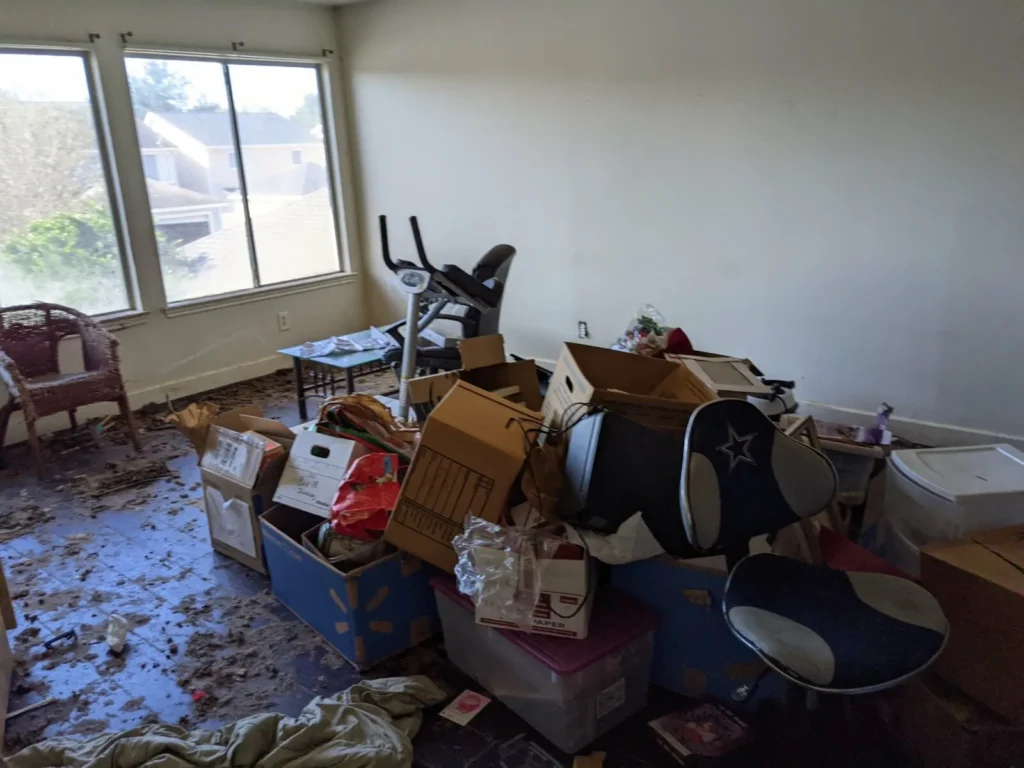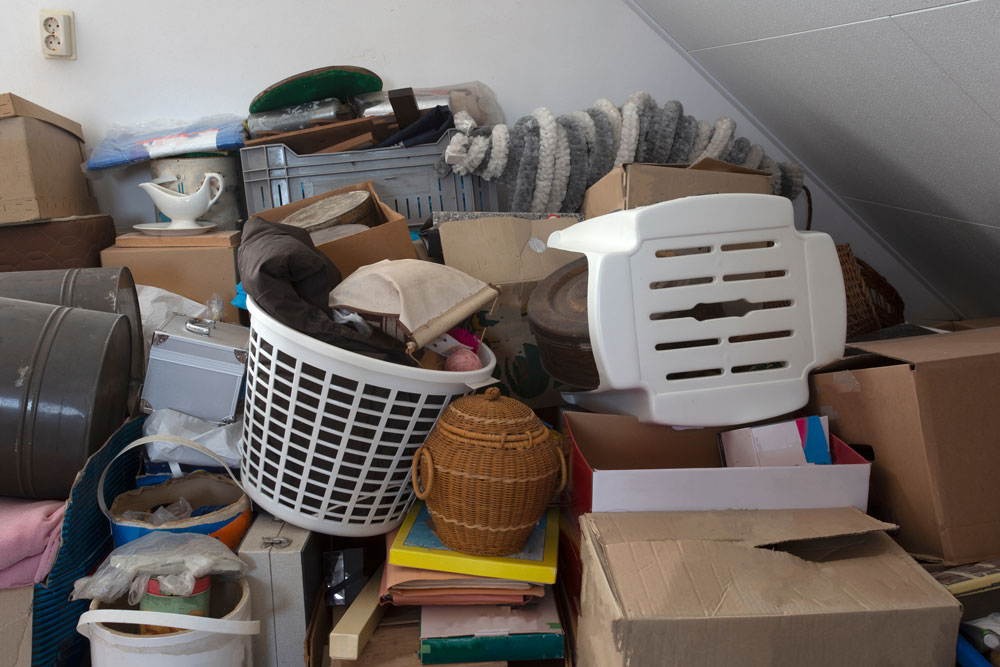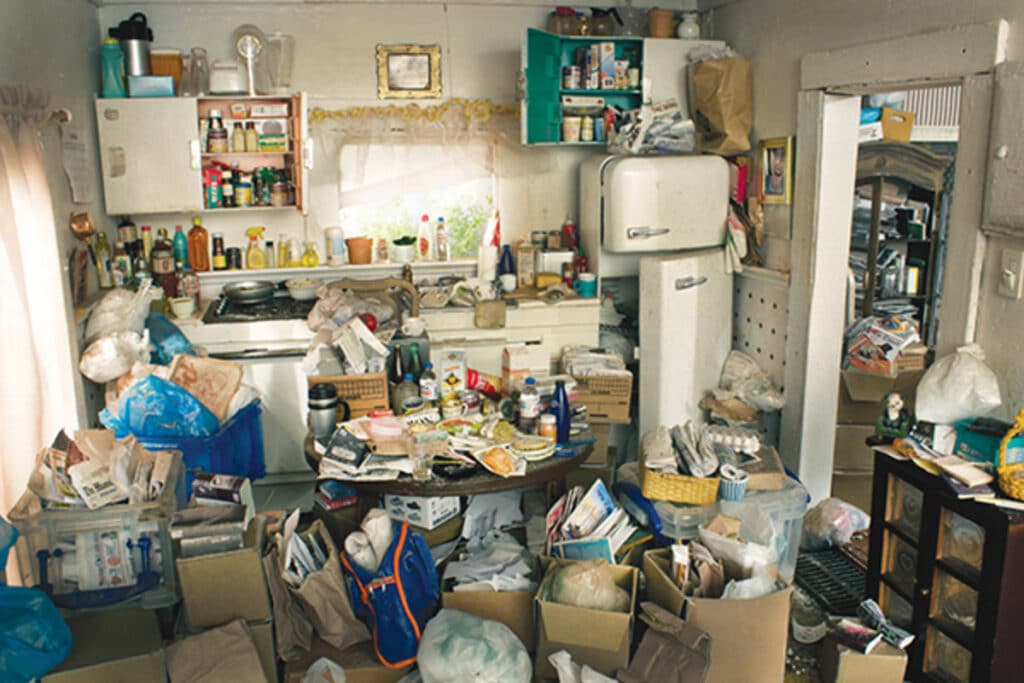Pricing for cleaning a hoarder’s house can vary based on factors like the size of the property, the extent of clutter, and the level of cleaning required. However, The expenses associated with hoarding cleanup can vary widely, contingent upon the extent of the task. Generally, the baseline cost to tidy a hoarder’s residence typically ranges from $1,000 to $3,000 (or around $2 per square foot), with potential for escalation.
Equipment, supplies, and labor are also significant considerations, along with location-based variations in market rates. It’s advisable to conduct an on-site assessment before providing a quote to accurately gauge the scope of the job.
Sensitivity and care are essential due to the emotional and psychological challenges often associated with hoarding situations, which may require additional support from cleaning teams.
What factors influence pricing for cleaning hoarder’s houses?

Pricing for cleaning hoarder’s houses can be influenced by a variety of factors. One of the primary considerations is the severity of the hoarding situation, as the extent of clutter and debris greatly impacts the time and resources needed for cleaning. Additionally, the size of the property plays a significant role, with larger houses typically requiring more labor and materials.
The presence of biohazardous waste, such as mold or animal waste, can also contribute to higher costs due to the specialized equipment and procedures required for safe removal. Structural damage, accessibility issues, and the need for specialized expertise further affect pricing. Moreover, regional factors, including the cost of living and market demand, may influence rates.
Additional services like organizing and deodorizing, as well as the urgency of the cleanup, can also contribute to the overall cost. Cleaning companies typically assess each hoarding situation individually to provide accurate pricing estimates based on these factors.
How should the job of cleaning a hoarder’s house be assessed?

Assessing the job of cleaning a hoarder’s house requires a comprehensive approach to understand the scope and complexity of the task.
Here’s a suggested process for assessment:
On-site evaluation
Begin by conducting a thorough on-site evaluation of the hoarder’s house. This involves physically visiting the property to assess the full extent of the hoarding situation. Take your time to carefully observe and document the conditions inside the house, including the level of clutter, presence of debris, and any signs of biohazardous materials such as mold, mildew, or animal waste.
Moreover, pay attention to the overall layout of the property, noting any areas that may be particularly challenging to access or clean due to clutter accumulation or structural issues.
Consultation with the client
Schedule a consultation meeting with the client to discuss their specific needs and concerns regarding the cleanup process. During this meeting, listen attentively to the client’s perspective on the hoarding situation, including any emotional attachments they may have to the items in their home.
You take the time to address any questions or uncertainties they might have about the cleaning procedure, and provide reassurance that their privacy and confidentiality will be respected throughout the process.
Documentation
As you assess the hoarder’s house, document your findings using a combination of photographs, videos, and written notes. Be thorough in your documentation, capturing details such as the condition of individual rooms, the types of items present, and any visible signs of damage or deterioration.
This documentation will serve as a valuable reference point for both you and the client as you develop a cleaning plan and estimate the resources needed for the job.
Risk assessment
Conduct a comprehensive risk assessment to identify any potential health and safety hazards associated with the hoarding situation. This may include hazards such as mold growth, pest infestations, structural instability, or the presence of hazardous materials.
Evaluate the severity of each hazard and develop strategies to mitigate risks effectively during the cleanup process. It’s essential to prioritize the safety of both your cleaning team and the occupants of the property throughout the project.
Develop a cleaning plan
Based on your assessment findings and risk analysis, develop a detailed cleaning plan outlining the specific steps and procedures required to restore the hoarder’s house to a safe and habitable condition.
This plan should be tailored to address the unique challenges presented by the hoarding situation, including tasks such as decluttering, waste removal, deep cleaning and sanitizing surfaces, addressing structural damage, and implementing preventative measures against future hoarding behavior.
Estimation of resources
Estimate the resources needed to execute the cleaning plan effectively, including labor, equipment, cleaning supplies, and disposal services. Consider factors such as the size and layout of the property, the severity of hoarding, and any specialized requirements for handling hazardous materials or structural repairs. Take the time to carefully assess each aspect of the job and provide a realistic estimate of the resources needed to achieve the desired outcomes.
Cost estimation
Based on your resource estimation and the complexity of the job, provide the client with a detailed cost estimate for the cleanup project. Be transparent about your pricing structure and any additional charges that may apply for specialized services, such as biohazard cleanup or structural repairs.
It’s essential to communicate clearly with the client and ensure that they have a realistic understanding of the costs involved in the cleanup process.
Client agreement
Once you have presented the cleaning plan and cost estimate to the client, obtain their agreement on the proposed scope of work, timeline, and pricing.
Take the time to address any questions or concerns the client may have and ensure that they are fully informed and comfortable proceeding with the project. Establish clear communication channels for ongoing updates and feedback throughout the cleanup process.
Execution
With the client’s approval, proceed to execute the cleaning plan according to the agreed-upon schedule and specifications. As you work through each phase of the cleanup process, keep the client informed of progress updates and any deviations from the original plan that may arise.
Be flexible and responsive to the client’s needs, and prioritize open communication to ensure a positive and collaborative working relationship.
Follow-up
After completing the cleanup, conduct a final inspection of the property to ensure that all tasks have been completed satisfactorily. Walk through the house with the client to review the results of the cleanup and address any remaining concerns or touch-ups as needed.
Provide the client with guidance on maintaining a clutter-free and healthy living environment going forward, including tips for organizing their belongings and preventing future hoarding behavior.
Follow up with the client after the cleanup to ensure their satisfaction and address any additional needs or questions that may arise.
What pricing strategies are effective for cleaning hoarder’s houses?

Effective pricing strategies for cleaning hoarder’s houses involve careful consideration of various factors to ensure fair pricing for both the cleaning company and the client. One approach is to offer tiered pricing based on the severity of the hoarding situation, with different pricing packages reflecting the level of clutter, debris, and biohazardous materials present. This allows clients to choose a pricing option that aligns with their specific needs and budget constraints.
Additionally, providing transparent pricing with detailed breakdowns of costs for labor, equipment, supplies, and disposal services can help build trust and credibility with clients. Offering bundled services, such as combining hoarding cleanup with organizing or deep cleaning services, can also provide value to clients and incentivize them to choose comprehensive cleaning packages.
Furthermore, implementing loyalty programs or discounts for repeat clients or referrals can encourage customer loyalty and generate positive word-of-mouth referrals. Overall, adopting a flexible pricing strategy that considers the unique circumstances of each hoarding cleanup project while providing clear pricing information and added value to clients can contribute to the success and sustainability of a cleaning business in this specialized niche market.
FAQ’s
How long does it take to clean a hoarder’s house?
The duration to clean a hoarder’s house can vary widely depending on the extent of the clutter, but it often takes several days to weeks for thorough cleaning and organization.
How do you clean a hoarder’s house fast?
To clean a hoarder’s house efficiently, prioritize sorting items into keep, donate, and discard categories, enlist professional help if needed, and follow a systematic approach to tackle cluttered areas.
What are the 5 stages of hoarding?
The five stages of hoarding are clutter, collection, compulsion, consequences, and coercion, representing the progression from accumulating possessions to experiencing negative impacts on daily life.
Final Words
To set fair prices for cleaning hoarder’s houses, cleaning companies think about how cluttered the house is and offer different prices based on that. They make sure their prices are clear and easy to understand, and they might give discounts for people who come back or tell their friends. This helps them keep their clients happy and their business successful.
